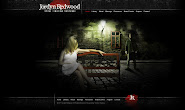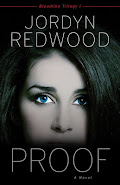Welcome, JoAnn!
Henry VIII never had nursing care as we know it today. In his time, care of the sick fell to family members or servants, generally female. Henry’s last wife, Katherine Parr, certainly fulfilled this role for Henry.
Obviously, the modern medical testing which can categorically confirm or rule out disease cannot be brought to bear on Henry’s case. Nursing diagnosis, which evaluates the human responses to alterations in health status, can be, and can elicit useful medical information about Henry VIII for those writing Tudor fiction.
A mind is a terrible thing…
Nursing Diagnosis: Risk for Injury
Nursing Diagnosis: Thought Process, Disturbed
Nursing Diagnosis: Violence, Risk for
Henry VIII excelled in all of the sports and athletic activities enjoyed by the Tudor nobility. He wrestled, hunted on horseback, played tennis, jousted and danced.
Henry VIII suffered a serious fall from a horse while jousting in 1536, at the age of forty-four. He lost consciousness for a period of time after the fall, indicating that a significant brain injury may have occurred.
This event coincided with the beginning of Henry’s divesting himself of his second wife, Ann Boleyn. As is well known, he eventually went on to execute Ann, another wife, and numerous friends and political advisors.
It has been suggested that this head injury ‘turned’ Henry VIII violent. In view of his track record prior to the injury, this theory is not 100% supportable. That track record includes the executions of Bishops More and Fisher and the ruinations of Henry’s first wife and of his erstwhile friend Cardinal Wolsey.
Porphyria, a genetic condition of the metabolism, has also been mooted as a cause of Henry’s mental proclivities. The disease causes numerous physical and mental symptoms, including mental irritability and derangement. Arguments that porphyria caused the “madness” of George III, a distant Tudor relative, bolster the porphyria theory, but not convincingly. McLeod Syndrome, a genetic blood disorder with some similar symptoms to porphyria, seems a likewise distant possibility.
Of course, there is no physical evidence extant to support any argument for a genetic condition causing Henry VIII’s various symptoms. A look at his family tree, though, might shed some future light on such a possibility.
Henry’s elder sister, Margaret, was, like Henry, significantly overweight. A descendant of Margaret’s, Queen Anne the Good (1665-1714), is probably the Tudor relation whose health issues most closely resemble Henry’s. She suffered severe obesity later in life, lower leg pain and ulceration, functional immobility, and a very sad reproductive history. She had at least seventeen pregnancies, which produced only four live children who died in infancy and one very frail hydrocephalic boy who died in his teens. Her possible medical diagnoses have never aroused the interest that Henry’s have, but a thorough comparative study of Anne’s and Henry’s health issues might prove informative. Diabetes, hypothyroidism, and Cushing’s Syndrome would all likely feature as “rule in/rule out” diagnoses in such research.
***********************************************************************
JoAnn Spears is a registered nurse with Master’s Degrees in Nursing and Public Administration. Her first novel, Six of One, JoAnn brings a nurse’s gallows sense of humor to an unlikely place: the story of the six wives of Henry VIII.
Six of One was begun in JoAnn’s native New Jersey. It was wrapped up in the Smoky Mountains of Northeast Tennessee, where she is pursuing a second career as a writer. She has, however, obtained a Tennessee nursing license because a) you never stop being a nurse and b) her son Bill says “don’t quit your day job”.








































